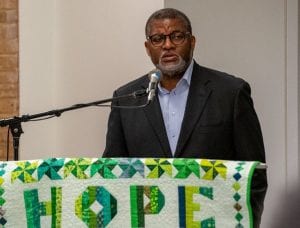
Bill Bynum, CEO and president of HOPE in the Mississippi Delta.
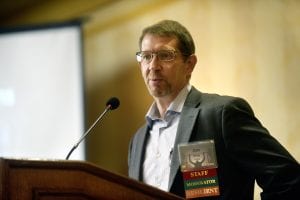
Jim King, CEO and President of Fahe in Appalachia.
Bill Bynum and Jim King are, respectively, CEO and president of HOPE in the Mississippi Delta, and Fahe in Appalachia Kentucky. In some ways, Bynum and King work in very different places—separated by climate, geography, and often race. But in many other ways, as the two are quick to point out, they and their communities are far more similar than different. For three decades, they’ve worked to bring economic justice and opportunity to their respective communities, they’ve been innovators in the field of nonprofit finance, and they’ve worked tirelessly to change the way we think of poor rural areas. They’ve brought resources and investment to their communities while, at the same time, dispelling toxic attitudes about those areas. Their observations and ideas are always worth paying close attention to.
Miriam Axel-Lute: What myths about rural areas do you hear most often, particularly within the community development world, and how are they wrong?
Bill Bynum: One of the myths is there’s no capacity. I wish I had money for every time I heard a foundation or a public agency question the capacity to deploy resources in rural areas. There’s nothing that people in rural areas can’t do that other people can do if they have the opportunity and the resources.
You have a shortage of resources—$41 per person [in philanthropic funding] in the Delta and Appalachia compared to $995 per person in New York. Plus the lack of CRA assessment areas in rural areas [means that] even though banks get a great deal of revenue from buying mortgages and investments from those areas, they don’t reinvest there. This, with the low tax base both at the local and at the state level, is going to inevitably produce less infrastructure and less capacity. But it’s not as if investments would not be effectively put to use and make a substantial difference.
Jim King: Part of the problem is there is capacity, but it doesn’t look like it does in an urban market. The majority of those who make decisions about philanthropy, capital, and federal dollars no longer understand rural places. They don’t know how to read the landscape well enough to see what capacity is unless it hits them in the face.
So what does it look like?
King: In an urban market, or non-rural market, you have people who are specialists in everything because you have a density of population that allows that to happen. I worked in Philadelphia before I moved to Appalachia, and in one afternoon [there] you could meet all these different small nonprofits, specialized on just property management or just housing counseling.
The further you get away from population density, what you have are organizations that appear to be more generalist. My membership is mostly known for housing, but they provide leadership in communities across all kinds of things. They sit on the school board. They are on city council. They run the food closet for the churches in town, as well as being property owners and managers and building houses and writing mortgages. They do all that stuff, but they are not that big, and so they’re spread thin. You have a lot of capacity, but it gets spread out really far.
That’s even true for [regional CDFIs working in rural areas] like my organization and Bill’s. We’ve all got our hands in way more things than our counterparts of similar size in completely different markets.
And that’s not something that is seen as desirable by people who are funneling resources? They’re looking for specialists?
Bynum: It’s so counter to what their urban paradigm is it’s not as attractive in most cases. It takes a lot more explaining. [At the Rural Places, Rural Spaces conference in Itta Bena, Mississippi, in February, Bank of America’s] Dan Letendre talked about the consolidation of banks and how they don’t ask if you can repay the loan, [just] do you fit into their business model, do you fit that box. And if you don’t fit that box, then you’re not likely to get a loan.
I think there’s a similar dynamic with philanthropy, banks, and federal programs, and it just makes it more difficult for us to access resources.
King: Part of the issue is that those boxes are being drawn up by people who have little to no experience having lived in a place of less than 500,000 people, which is one of the definitions that we heard recently for a study on “smaller communities.” In the whole state of Kentucky, I only have three communities that would exceed 500,000 people, and that’s out of a population of 8 million people.
How about myths to do with rural demographics and politics?
Bynum: One of the [reasons] we’re having this conversation is because Jim and I spent time exchanging ideas [and] lessons, learning from each other’s organizations, visiting each other. Our places had so much more in common than is typically perceived. Obviously, there are surface differences, but the level of persistent poverty, the level of infrastructure, the level of need, is very similar. Certainly, the Delta in Mississippi, Alabama, and Louisiana have higher concentrations of African Americans [than Appalachia]. But we have a lot of poor white folks in our region as well, and the inverse is true for Jim and for other areas.
Touching on the political aspects a bit, I think that often you see people’s interests being pitted against other people who are in a very similar situation. The poor people in Appalachia and the poor people in the Delta have a lot more in common with each other than they do with people who are wealthier. But that’s certainly not the dominant narrative that often comes out. Organizations and groups that are doing work in persistent poverty areas agree that collectively our voices really represent more of what America looks like than most people who are not from these communities, and even people in these communities, will acknowledge. Poverty crosses a lot of hues of this country.
When people say “rural,” they often seem to be implying white. Do you find that?
Bynum: That is the picture that is often painted even by people who care about these issues, much more so than rural as a very diverse place that has people who are Black, people who are Hispanic. A lot of the [Native-American] population lives in rural areas. And there’s surely a lot of poor rural white folks as well, but that’s not the picture that is typically painted.
King: It’s the same [as] with poverty generally—they just have not gotten close enough to it to have an accurate picture of what it really is. They have a story in their mind about what it is. Some folks actually think rural places look like state parks or wheat fields. And that’s certainly a picture. It’s just not the only picture.
Lance George from the Housing Assistance Council has a phrase he uses: “We call it rural like it’s all one place.” And it’s all these places. It’s really rich in diversity. It’s just not seen or known to be that. That [idea of a] sort of backward white population is linked to places like Appalachia, where that is less and less true all the time.
One of the things that we want to [do] as a group is not overlook our differences but embrace who we all are and what our regions are, and choose to see how we have things in common. We honestly just need each other if we’re going to be effective in bringing some change to our respective regions, even though that means we have a lot of work to do within our own regions as we bring people along.
For me in particular, I am working with a lot of white poverty that doesn’t know how desperately they need to be seeing our friends in the Delta as real allies as opposed to adversaries.
What are ways that community development work is often thought about that just don’t work as well in rural areas?
King: Particularly for the block grant programs, there’s an additional hurdle if you are in a non-metro area. You have to compete for “balance of state.” If you’re already in a small and income-challenged part of the country, the last thing that you probably have on your list as the mayor or the county judge is to have a community planner who helps you compete for that money, but you’re competing with everybody else who isn’t in Louisville, or Lexington, or Jackson. That’s an unintended barrier.
Bynum: In most states there are planning and development districts, or regional councils of government, or whatever the quasi-governmental entity is that is assigned to helping rural municipalities access federal programs. They are limited, and their staff as well. Just like most any other transaction dynamic that you’ll see, a lot of that’s driven by relationships. If they go to church with the mayor of a town or have connections, then those communities are often going to be at the front of the line in accessing a relatively limited pie. Where those relationships don’t exist, those municipalities are going to have much more difficulty accessing those limited resources.
Many of those quasi-government organizations don’t have a lot of representation of people of color. You’ve got a larger percentage of African-American elected officials in Mississippi than anywhere else, and they’re in small towns. They don’t have a planning and development director. They don’t have someone who can write CDBG applications, and they don’t have a buddy at the State Housing Finance Agency to access blight elimination resources. And so, those programs are hard to access. We’ve been working to try to close that gap by kind of acting as quasi-economic development staff for those places.
King: Our starting point, particularly in the more impoverished regions, is different. A lot of standard approaches make assumptions about what’s already in place and what it takes to make something work. There’s just a lack of private investment to go along with grants that leaves us without all of the infrastructure in place, not built infrastructure but the intellectual capital and the value chain that it takes to move money and projects. It makes regional, backbone-ish type organizations really important.
If you’re coming from Itta Bena, Mississippi, how far you’re going to get in trying to make connections in Washington, D.C., is a lot different than if you’re the mayor from Louisville. Those are very different connectivities. But that’s where Bill and his organization are going to play that role respectively in the Delta, and the rest of us are doing that in our respective regions, as well.
Bynum: During the shutdown, I think it was the commerce secretary who said, “It’s OK. Why won’t people just go get a loan” to tide them over? Well, we know how hard that is for some people, particularly when you’re in banking deserts and in resource deserts and for low-income people in general. And the same thing sort of in parallel plays out when you’re talking about accessing public dollars or philanthropic dollars, or some of the larger bank investments [for rural areas].
I did a Hill visit last year and several delegations from our region [and] staff said, look, we’ve got billions of dollars here that we want to get back into these areas, but we know that these communities don’t have the wherewithal to access them. They don’t have someone who can do the grant writing, who can do the relationships. And they were pretty intrigued about the possibility of a FAHE or a HOPE or a CDFI playing that role.
And these are conservative representatives, but they understand that their constituents need resources. The challenge is that CDFIs and local community development organizations in high poverty areas are not as resourced to do that. We were able to get a R&D grant, a demonstration grant from the Delta Regional Authority, and a little bit of money from USDA from a program that is designed to provide technical assistance to communities and do a demonstration project. Well, if that’s a demonstration, we’ve proven that it can work. Where is the implementation? Where is the long-term?
Are there program design and best practices beyond the resources and relationships that differ in rural areas? Things presuppose a certain amount of density to make them work, for example, or forget that people will actually need cars for transportation?
King: Way too many actors on the philanthropic side who are like, “Well, we need to do some exploratory work on this” as if they need to get up to speed for themselves before we can start to talk through what approaches would really work. More often than not, I feel like—compared to my peers in other markets, non-persistent-poverty and non-rural markets—I’m piecing together funding strategies. We get a little here, a little there, but there isn’t the same kind of attention that, say, when a group of foundations decide they want to tackle the issues of a place like Detroit. They understand what Detroit ought to look like if it was successful. We don’t have enough thinkers who know what a successful rural place really is. We know it when we visit it, right? Like, “Oh, I’ve been to Bar Harbor, and it was awesome, and Acadia is awesome.” But that’s an attraction. That isn’t just about a workable economy and a livable place in and of itself.
There’s an effort afoot, and I’d like to see a lot more. And they ought to be leaning on folks like Bill Bynum, Chrystel Cornelius, Stan Keasling, and Nick Mitchell-Bennett to get to those answers. The expertise is actually in the field and that’s the way that ought to get treated.
Tell me about why you’ve chosen the term “persistent poverty areas” as opposed to “rural” as your moniker for describing your group.
Bynum: There is a deeper need in places that have had long-term entrenched poverty for decades in a row and we have too many of them in our areas. It also is a definition that the federal agencies have adopted, and so it is helpful to be able to talk to them in terms that they understand and have, in some cases, started to think about programming around.
Have you gotten any pushback on that term from folks who are working in some of those many urban neighborhoods that have also been persistently poor for decades?
Bynum: Not to diminish the presence of persistent poverty in urban areas, [but] one of the reasons it’s particularly important to focus on poor rural areas—if you look at New Market Tax Credits, we did this analysis a few years ago: 72 percent of all New Market Tax Credits in persistent poverty areas went to six counties in Philadelphia, Baltimore, two in New York, St. Louis, and New Orleans. That leaves the other 378 persistent poverty counties to fight for the balance. And most of those are in rural areas. I think it justifies a focus on rural persistent poverty.
Certainly there’s a different quality to being in a persistently poor area that is surrounded by areas that have resources as opposed to a larger area that is covered by that persistent poverty definition.
Bynum: My first visit with this Gates-funded [US Partnership on Mobility from Poverty] partnership, we went to Brooklyn, Bed-Stuy [Bedford-Stuyvesant]. Certainly Bed-Stuy has some challenges, but they were also able to call on IBM to set up an apprenticeship program in the school and guarantee jobs for the students who went through that program. And their ability to access CRA dollars and resources is vastly different from the places that Jim and I worked. And so, I brought the group to the Mississippi Delta, and they said, “OK, we get it.” There are differences in urban and rural persistent poverty. Both are important and need to be addressed, but the circumstances are vastly different.
Are there things that you think urban areas can learn from the work that you guys are doing in rural areas?
King: People are more innovative. They are more cooperatively minded because they need each other in a different way. It is all about getting to enough scale to attract certain kinds of resources. That kind of cooperation over time makes it possible for us to do things that you can’t just turn on a dime and do. I see that organizations that work mostly in rural markets, or at least have that as a large part of their culture, respond really well in different kinds of disasters because they know how to make do with a lot of different things.
In the community development field, we won’t achieve the scale we want unless we are truly in trusted relationships. Collaboration is a word that gets thrown around pretty easily, but if you want to get something really important done, you’ve got to be willing to risk something with your friends. If the field was going to learn something, that’s the one. Overall, I find us to be far less territorial, much quicker to partner.
Bynum: I absolutely agree. Like Jim, I’ve worked in Philly. I’ve worked in the research triangle in North Carolina and rural North Carolina. There was a marked difference between the groups. In the research triangle [and] in Charlotte they are somewhat siloed on program. They work together often on some policy advocacy, which was encouraging, but programmatically, not as much as compared to groups in rural areas.
King: A lot of programs are thought of on a relative poverty basis, so your eligibility is based on the percent income that you have next to your neighbor. Both HOPE and FAHE work in places where the median income in a county might actually be at or below the national poverty line. So if a program like the National Housing Trust Fund [is limited to serving those making] 30 percent of median income were into only reaching people with incomes of literally thousands of dollars, not even $10,000, that’s a neglect of reality.
The communities with the lowest AMIs have significant populations that cannot be served, and the eligibility makes the market very narrow. The trust fund does have an absolute floor, but it’s the national poverty line, so a really low bar.
Bynum: We are certainly more privileged, fortunate, and resourced than the people we serve, but relative to other community development organizations in other places, our ability to secure matching funds in a philanthropy desert and in banking deserts and in public resource deserts is pretty insane. An unrealistic expectation for match and also the leverage is often baked into many programs. It twists us into a pretzel [and] often makes the program not very useful or accessible.
King: None of the places we’re working in are hopeless. They are worth investing in. We ought to make a bet on people regardless of the place. And I don’t think that’s the way that the dynamics around community development are set up always. It’s more like, well, we want the best bang for our buck.
We’re succeeding with way too little support, but we still see real successes. People and communities don’t need all that much to rekindle their hope and make things happen on their own, but it takes more than what we’ve got now.
The other thing that really excites me about this [persistent poverty working] group [is, given] the challenges that we face as a country, where we’re so quick to look at how we’re different and judge [someone] because they don’t think or act or look like us, to come together with other folks like Bill and just hold commitment that we’re going to work on something together because we chose to and to live into our unity and our differences, that holds to me a great hope for our country. I think we’re going to figure this out. We’re going to do something really worthy of people’s attention. There still exists an American spirit that says we’re going to work together because we need each other.
Thank you.

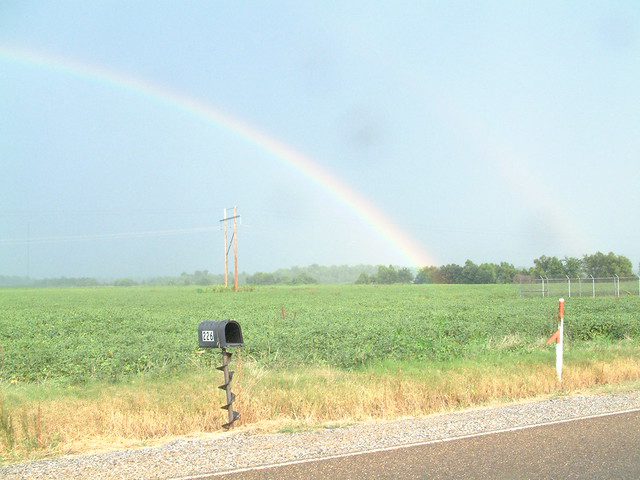
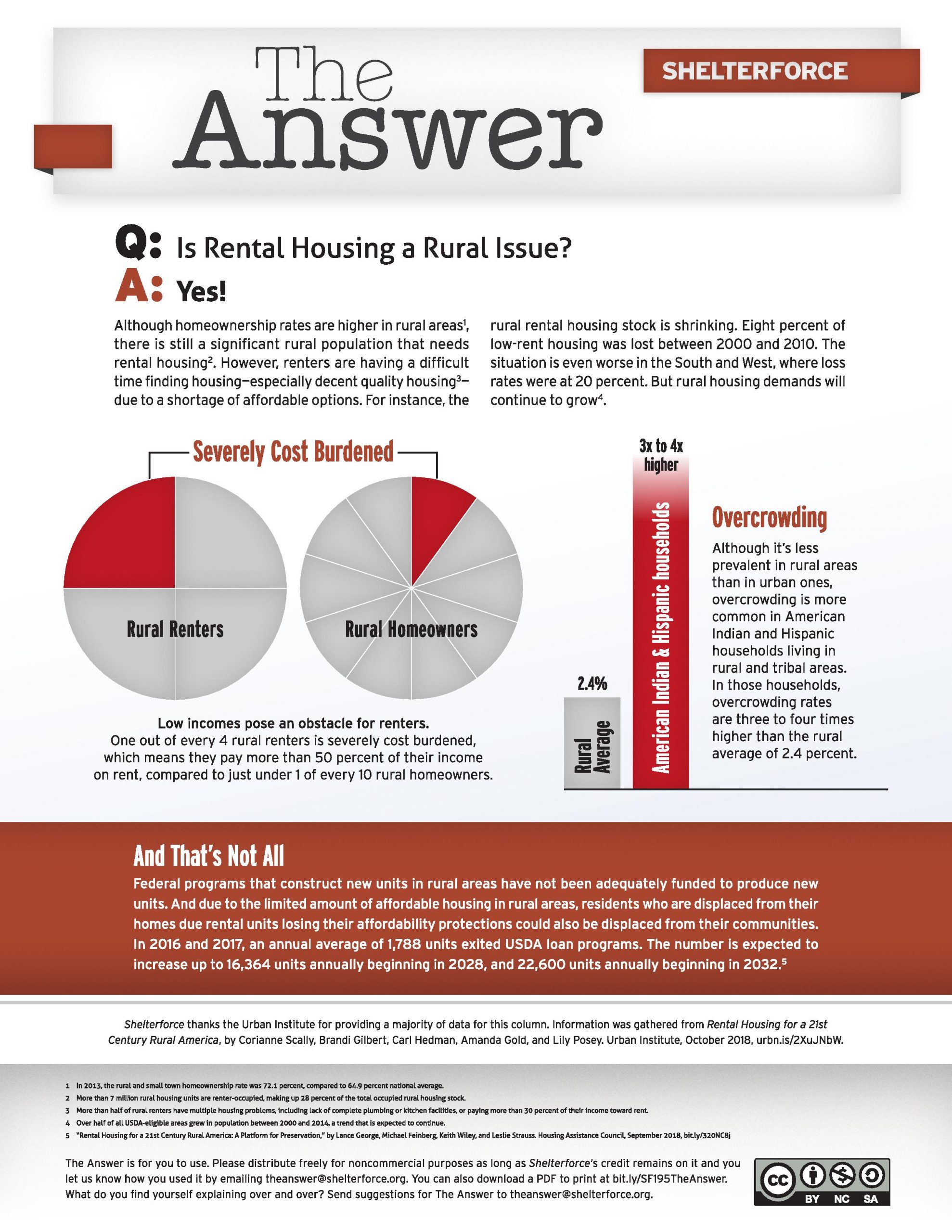
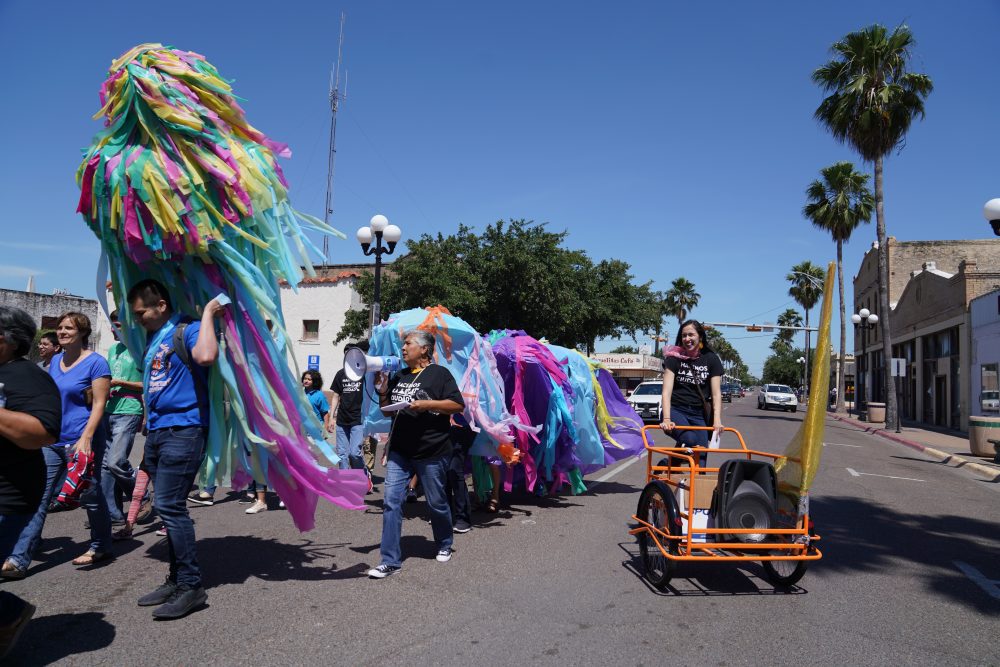

Excellent interview. Thank you Bill and Jim for your insights into rural poverty. While the challenges are many, there are also strengths in these places that need to be embraced. I appreciate both your creativity and tenacity in tackling this work.
As somebody who works in a planning district, I agree. However, what is missing is acknowledging that there are grant writers and help for rural areas-these planning districts. We have the relationships and ability to help. It’s frustrating because planning districts can move across political boundaries that cities/towns/parishes/counties and states can’t.